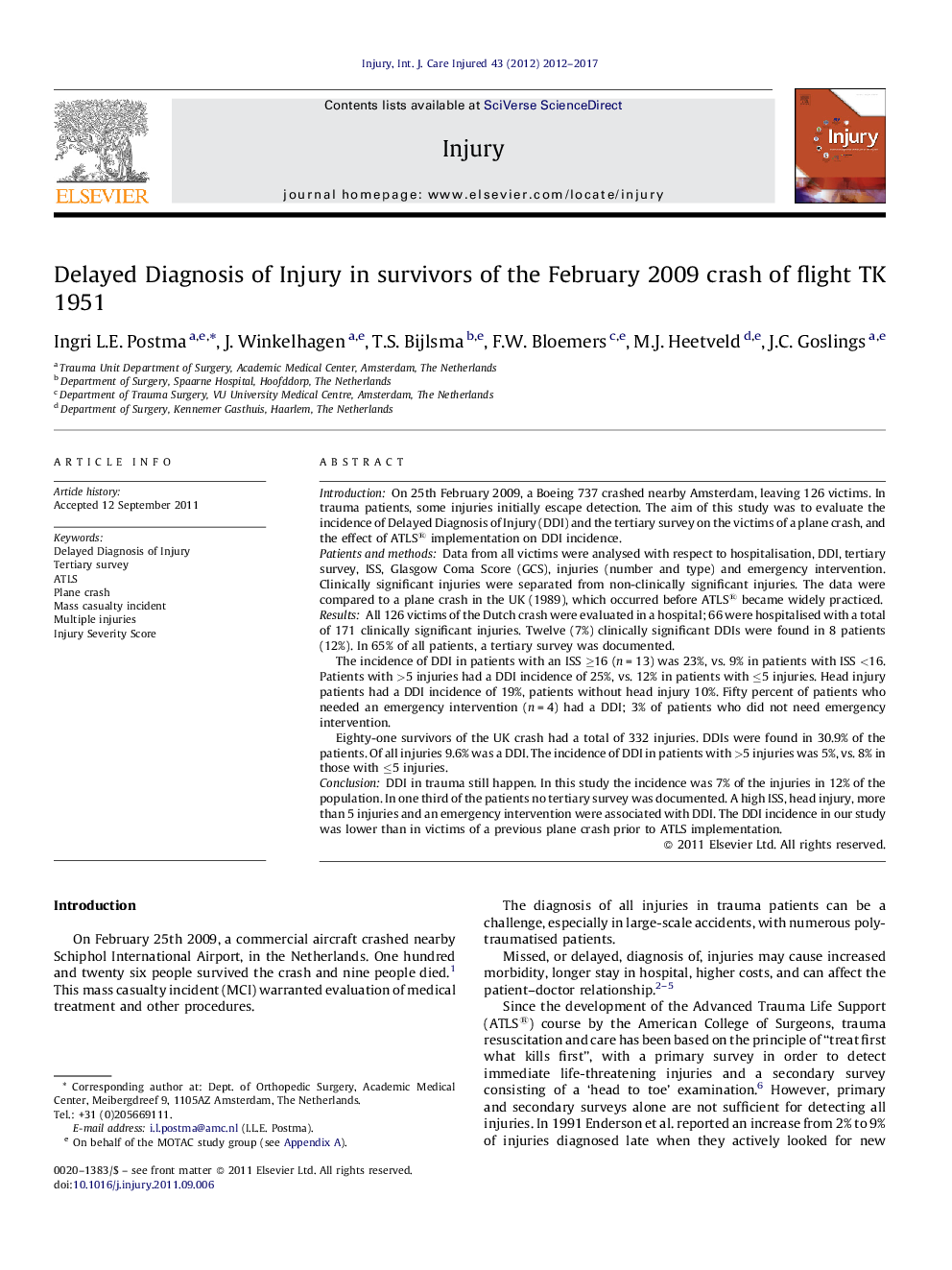| کد مقاله | کد نشریه | سال انتشار | مقاله انگلیسی | نسخه تمام متن |
|---|---|---|---|---|
| 3240683 | 1206050 | 2017 | 6 صفحه PDF | دانلود رایگان |
IntroductionOn 25th February 2009, a Boeing 737 crashed nearby Amsterdam, leaving 126 victims. In trauma patients, some injuries initially escape detection. The aim of this study was to evaluate the incidence of Delayed Diagnosis of Injury (DDI) and the tertiary survey on the victims of a plane crash, and the effect of ATLS® implementation on DDI incidence.Patients and methodsData from all victims were analysed with respect to hospitalisation, DDI, tertiary survey, ISS, Glasgow Coma Score (GCS), injuries (number and type) and emergency intervention. Clinically significant injuries were separated from non-clinically significant injuries. The data were compared to a plane crash in the UK (1989), which occurred before ATLS® became widely practiced.ResultsAll 126 victims of the Dutch crash were evaluated in a hospital; 66 were hospitalised with a total of 171 clinically significant injuries. Twelve (7%) clinically significant DDIs were found in 8 patients (12%). In 65% of all patients, a tertiary survey was documented.The incidence of DDI in patients with an ISS ≥16 (n = 13) was 23%, vs. 9% in patients with ISS <16. Patients with >5 injuries had a DDI incidence of 25%, vs. 12% in patients with ≤5 injuries. Head injury patients had a DDI incidence of 19%, patients without head injury 10%. Fifty percent of patients who needed an emergency intervention (n = 4) had a DDI; 3% of patients who did not need emergency intervention.Eighty-one survivors of the UK crash had a total of 332 injuries. DDIs were found in 30.9% of the patients. Of all injuries 9.6% was a DDI. The incidence of DDI in patients with >5 injuries was 5%, vs. 8% in those with ≤5 injuries.ConclusionDDI in trauma still happen. In this study the incidence was 7% of the injuries in 12% of the population. In one third of the patients no tertiary survey was documented. A high ISS, head injury, more than 5 injuries and an emergency intervention were associated with DDI. The DDI incidence in our study was lower than in victims of a previous plane crash prior to ATLS implementation.
Journal: Injury - Volume 43, Issue 12, December 2012, Pages 2012–2017
